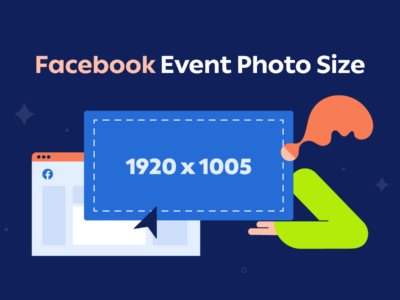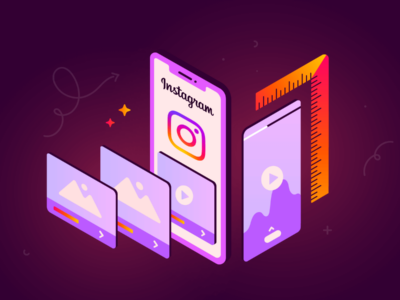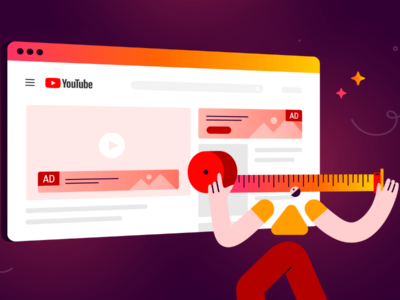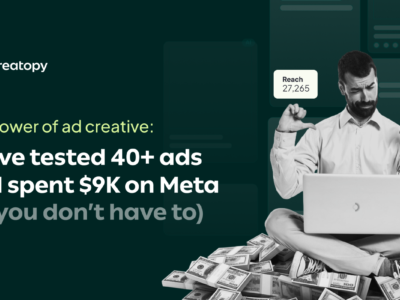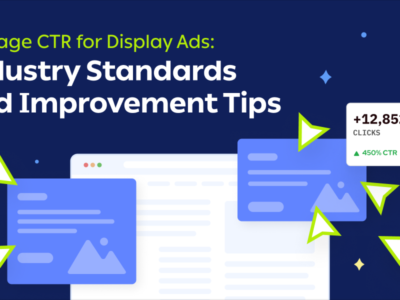How can we make our banner ad stand out in this fierce dispute for the consumer’s attention?How can we improve the efficiency of our message when consumers use more and more tools to hide our banners and even develop some “digital diseases” like banner blindness. And things aren’t going to get better. In fact, the CTR keeps getting worse. If in 1996 the average CTR was 2.1%, in 2012 was as low as 0.1%.
I believe a very good response can come from a very unexpected place: the world of SEO – Search Engine Optimization. Although you might not expect it at first, there are actually a lot of things we, banner makers, can learn from SEO specialists.
In this article I’ll show you 5 things you can learn from SEO guys so that your banner ad gets more clicks from much more relevant people, all these leading to lower advertising costs.
1. Research is key! So is talking in your users’ language
One of the most important steps in search engine optimization is keyword research in order to find out how your customers are searching for your product or software.
I know, you design banner ads. But the same process is also essential in advertising.
For example, one client, an architecture company, came to our online marketing agency so we’d help him optimize his website for SEO in order to better sell the service he was offering, civil engineering. Everything fine so far. But when we got done doing our research we saw that people were using queries like house plans, house projects, house designs etc. and almost no one was searching for “civil engineering”. This was the official name of the service, but normal people don’t use that. If we would have optimized for that, our work would have been in vain.
How did we know what words people used? We used tools such as the well known Keyword Planner from Google. But the best way to do this kind of research is to actually listen to your customers and observe how people talk about a service or product in a conversation.
The point is that the language you use in your banners shouldn’t be scientific or too professional, instead make sure to use the same words regular people use. This may sound like an “of course” advice, but if you go back and take a look at your worst performing banners, what are the chances that on many of them you will find some “official” and speciality terms?
The reason this works is that it’s one of the basic principles of persuasion and similarity. When we see things that we understand and relate to, we are more inclined to follow those call to actions.
2. Optimization is an ongoing process
SEOs try new things constantly to rank a website high in SERPs: they reoptimize old content that is underperforming, they A/B test headlines, they try to improve site speed, change meta descriptions etc. I know, lots of technical terms that you might not care much.
But truth be told, marketing is never easy. No matter the niche you work in. Constant optimization should be something that everyone in the branch does, no matter if it designs banners or creates flyers for a lemonade stand. Let me give you an example of how we optimize ads.
Remember that I told you we’ve changed the keywords from civil engineering to house plans, house projects etc? Soon after that, we saw that people were coming on the website, but they weren’t converting as we expected them to.
So, I looked into Google AdWords to find out what queries do our ads show up for. And we saw that people were searching for more specific things such as small house plans, small house plans with loft, small house plans with garage, small house plans with basement etc.
So we changed the copy on our landing page to match exactly what the users were searching for.
Back to you, don’t settle for one banner just because it works ok and you have visitors. Always do A/B testing for your banners and see which one converts better. From time to time take a step back and see how you could approach the strategy or the objective differently? Maybe you can go a bit deeper and include more psychology behind the design of your banners or you can try a different positioning or USP in your copy. A 1% improvement on each level of the marketing funnel can mean a lot for your bottom line.
3. Social proof is essential, no matter what form it takes
Search engine optimization relies very much on how many external links are pointing to your websites. And besides the number, even more important is the authority that these links carry.
The principle behind this is very simple: if you have a lot of people linking to your website, it means you have some valuable piece of content. And the more authoritative those websites are, the better your website will rank.
Just like in real life: the recommendation of a certain drug from a doctor carries more weight than the recommendation from someone you just met on the street, right?
So, links act as votes of confidence in SEO.
But, how can we show some votes of confidence in our banners?
A good example is to use a testimonial in your banner.
People trust other people who’ve tried something. In fact, 68% trust online opinions from other consumers, which is up 7% from 2007 and places online opinions as the third most trusted source of product information. Adespresso show on their blog that one of the most effective type of banners are those that contain a social proof.
Or take a look at how Neil Patel uses social proof and authority in his banners by placing a testimonial from a widely recognized name in tech to improve conversions.
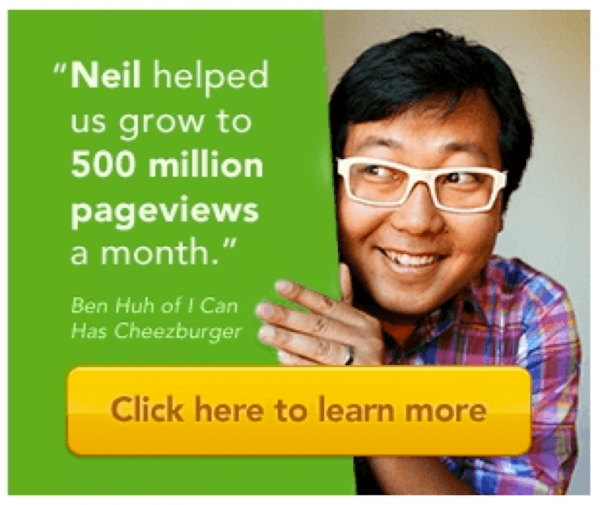
Another way you can use social proof and authority at the same time is by using badges. No matter if you use them on your landing page in order to increase conversions, or on your banner to increase click rate, try to incorporate more of what others say about your product.
You will look a lot more trustworthy.
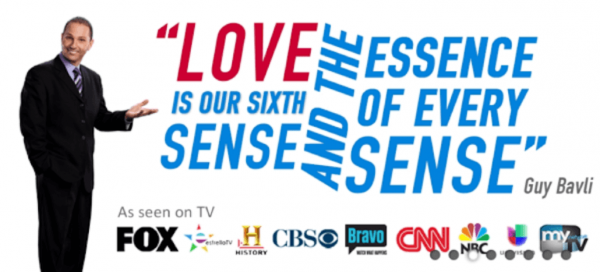
4. Repetition is key
In search engine optimization, you need to put your main keyword several times on your page (title, content, URL, ALT attributes etc) so that search engines understand what your page is all about.
What we found on other types of campaigns, such as Facebook Advertising is that sometimes repetition is key.
In fact, people rarely buy something the first time they see an ad. There’s also a direct correlation between the branding value of online advertising and the frequency of exposure to the banner ad.
This doesn’t mean that you have to repeat the same banner over and over again. SEOs use different types of keywords (informational, navigational, commercial) for different buying stages. You don’t want to become too aggressive and annoy your audience, but sometimes it’s worthwhile to let your customers see your ad or banner more than once.
5. Advertise for where your customer is in the marketing funnel
In SEO one of the basic things that you are taught is that there are different types of keywords and you have to optimize your content for each one of them. Some customers are just starting to look out for info about a problem they have, others look for a specific solution to their problem and others look to compare and see prices for the solution they choose.
For example, in the beginning you try to understand why your back hurts, then you search on how to stop the pain by yourself, then you compare between two solutions and finally you look for the best price. For each stage of the buying cycle you have to have a specific keyword.
And the same thing we can implement in banner creation. One common error that I see advertisers making is that they focus exclusively on close to conversion banners. And I understand that. But with today’s online advertising tools, it has never been easier to create awareness around a problem and educate your audience.
For only a few bucks you can start educating your audience on certain issues and introduce them into the sales funnel.
For example, we can actually start our campaign by promoting a blog post or a banner that sends people not to the sales page but on one that talks about a problem that they might have.
Next, we can create a remarketing campaign and promote an eBook, White Paper or other kind of material that fits our business that further helps the customer fix their problem.
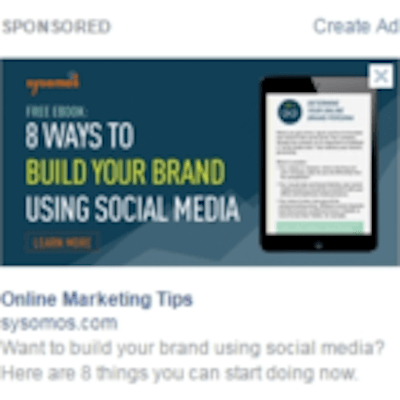
And finally, after another week or so we can finally show them a banner that will be customized with a message that will make the customers feel as if they were taken by the hand by a very close friend and is offered the final solution to their problem.

See how this can help? This is basically the inbound marketing approach, the only difference being that we use advertising to create awareness for the audience, and if we do the targeting right from the beginning with a few dollars we’ll introduce hundreds of people to our marketing funnel.
Conclusion
Focus on what the user wants. When you are targeting your customers, don’t just show what you think your user searches.
Don’t stop improving your banners just because your traffic or your conversions are “ok”.
Use social proof and authority to improve conversions
Find the magic number for how many times a user should see your banner.
Create different types of ads for different stages in the sales funnel.
Now, back to you. Are there any other tips that you know about?


